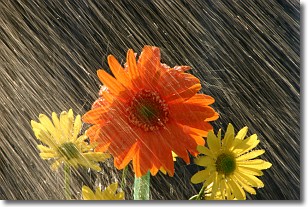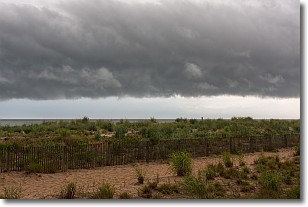Weather Alert in Texas
Beach Hazards Statement issued May 13 at 3:00PM CDT until May 14 at 10:00PM CDT by NWS Houston/Galveston TX
AREAS AFFECTED: Matagorda Islands; Brazoria Islands; Galveston Island; Bolivar Peninsula
DESCRIPTION: * WHAT...Dangerous rip currents and minor coastal flooding, especially during times of high tides are expected. * WHERE...Gulf-facing beaches, including the Matagorda Peninsula, Brazoria County beaches, Galveston Island and the Bolivar Peninsula. * WHEN...From late tonight through Wednesday evening. * IMPACTS...Hazardous beach conditions with strong rip currents, especially near jetties and piers. Elevated tides could lead to minor flooding of beaches, lots, parks and roads. This includes the lowest more-prone spots like Highway 87/24 along the Bolivar Peninsula, western Galveston Island, Bluewater Highway and Surfside.
INSTRUCTION: Remain out of the water to avoid hazardous swimming conditions. Rip currents are powerful channels of water flowing quickly away from shore...which occur most often at low spots or breaks in the sandbar and in the vicinity of structures such as groins...jetties and piers. Heed the advice of lifeguards...beach patrol flags and signs. If you become caught in a rip current...yell for help. Remain calm...do not exhaust yourself and stay afloat while waiting for help. If you have to swim out of a rip current...SWIM PARALLEL TO SHORE and back toward the beach when possible. Do not attempt to swim directly against a rip current as you will tire quickly.
Want more detail? Get the Complete 7 Day and Night Detailed Forecast!
Current U.S. National Radar--Current
The Current National Weather Radar is shown below with a UTC Time (subtract 5 hours from UTC to get Eastern Time).

National Weather Forecast--Current
The Current National Weather Forecast and National Weather Map are shown below.

National Weather Forecast for Tomorrow
Tomorrow National Weather Forecast and Tomorrow National Weather Map are show below.

North America Water Vapor (Moisture)
This map shows recent moisture content over North America. Bright and colored areas show high moisture (ie, clouds); brown indicates very little moisture present; black indicates no moisture.

Weather Topic: What is Precipitation?
Home - Education - Precipitation - Precipitation
 Next Topic: Rain
Next Topic: Rain
Precipitation can refer to many different forms of water that
may fall from clouds. Precipitation occurs after a cloud has become saturated to
the point where its water particles are more dense than the air below the cloud.
In most cases, precipitation will reach the ground, but it is not uncommon for
precipitation to evaporate before it reaches the earth's surface.
When precipitation evaporates before it contacts the ground it is called Virga.
Graupel, hail, sleet, rain, drizzle, and snow are forms of precipitation, but fog
and mist are not considered precipitation because the water vapor which
constitutes them isn't dense enough to fall to the ground.
Next Topic: Rain
Weather Topic: What are Shelf Clouds?
Home - Education - Cloud Types - Shelf Clouds
 Next Topic: Sleet
Next Topic: Sleet
A shelf cloud is similar to a wall cloud, but forms at the front
of a storm cloud, instead of at the rear, where wall clouds form.
A shelf cloud is caused by a series of events set into motion by the advancing
storm; first, cool air settles along the ground where precipitation has just fallen.
As the cool air is brought in, the warmer air is displaced, and rises above it,
because it is less dense. When the warmer air reaches the bottom of the storm cloud,
it begins to cool again, and the resulting condensation is a visible shelf cloud.
Next Topic: Sleet
Current conditions powered by WeatherAPI.com




